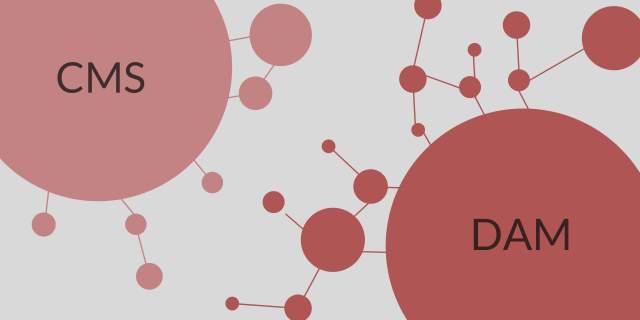
Content Management System vs. Digital Asset Management: What's the difference?
Discover the fundamental differences between content management systems (CMS) and digital asset management systems (DAM).
Companies need efficient solutions to manage and organize content, but the question often arises as to which solution is the right one for the company. Two of the most common systems used are content management systems (CMS) and digital asset management systems (DAM). Although both systems aim to manage digital content, there are fundamental differences in their functions and areas of application.
What is a content management system (CMS)?
A content management system (CMS) is a software solution that enables users to create, edit and publish digital content. A CMS is mainly used to manage website content and offers a user-friendly interface that allows users without technical knowledge to publish content.
Main features of a CMS:
- Content editing and publishing: Enables the creation, editing and publishing of texts, images and videos on a website.
- Template management: Provides templates and layouts for designing websites.
- User management: Manages user roles and rights.
- SEO tools: Supports search engine optimization through metadata and URL structures.
- Content scheduling: Enables the planning and time-controlled publication of content.
What is a digital asset management system (DAM)?
A digital asset management system (DAM) is a software solution for managing, organizing and storing digital assets such as images, videos, documents and other media. A DAM system offers advanced functions for managing large volumes of digital media and enables centralized storage and quick access to these files.
Main features of a DAM:
- Asset storage: Centralizes the storage of digital media.
- Metadata management: Enables the addition and management of metadata for better findability.
- Search and filter functions: Provides powerful search tools to quickly locate assets.
- Versioning: Tracks changes and saves different versions of an asset.
- Rights management: Controls access to different digital assets.
- Integration: Can be integrated into other systems such as CMS, PIM and CRM.
Main differences between CMS and DAM
The main differences between a content management system (CMS) and a digital asset management system (DAM) lie in their areas of application and functionalities. While a CMS is mainly used to manage and publish web content and offers functions such as content editing, template management and SEO optimization, a DAM is used to manage and organize a variety of digital media, regardless of whether they are published on a website. A DAM offers advanced functions for managing, categorizing and searching digital media as well as versioning and rights management. Target audiences for a CMS are typically marketing teams, content managers and website administrators who need to regularly create and update web content, while a DAM is ideal for organizations that need to manage large volumes of digital media, such as marketing and creative teams.
Summary
Integrating a CMS with a DAM system offers numerous benefits and can significantly improve the efficiency, consistency and flexibility of managing digital content. eyebase DAM also integrates CMS systems, further enhancing these efficiencies and benefits. By using modern technologies and best practices, companies can ensure that their digital assets are optimally utilized and managed.